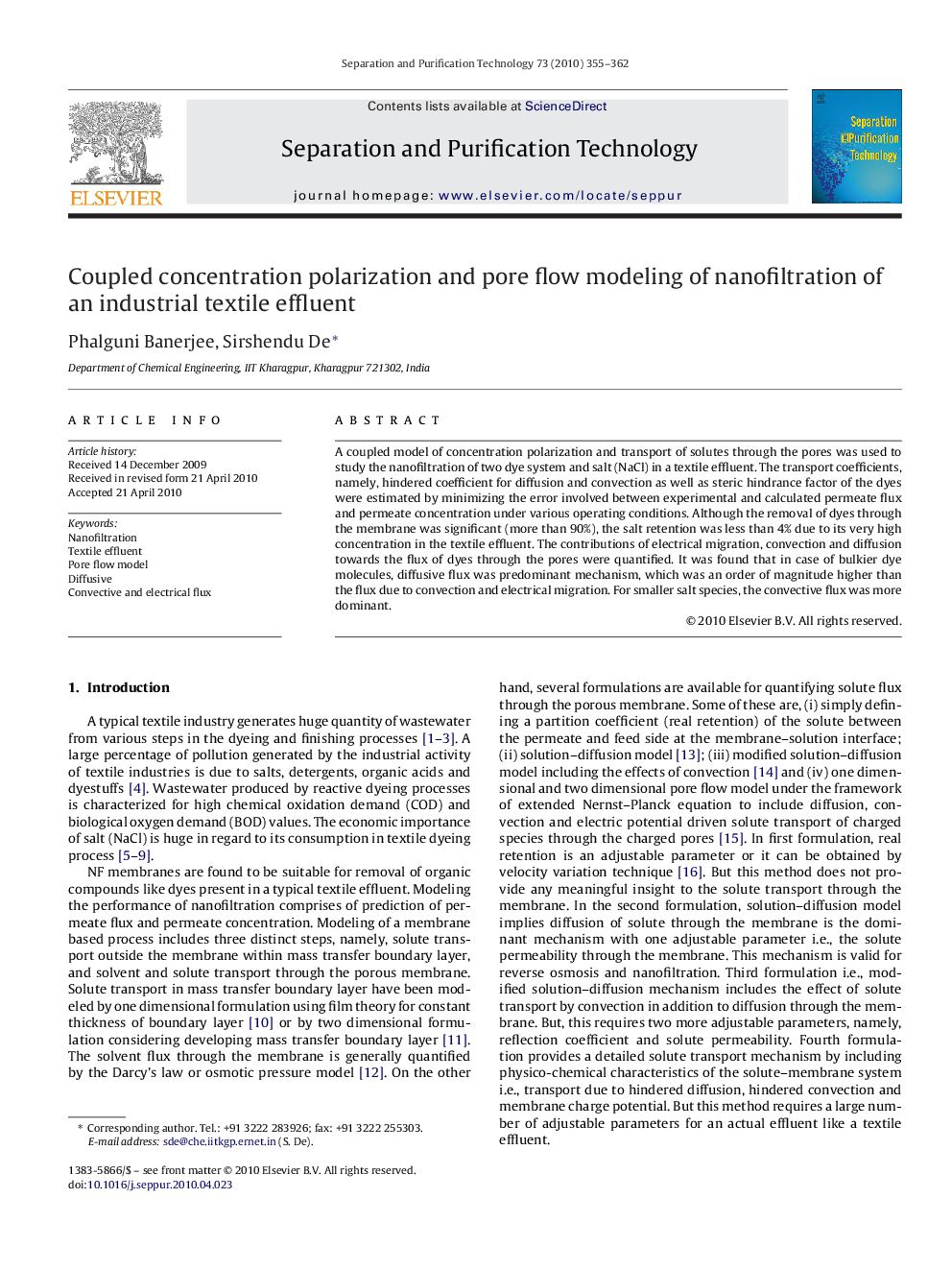| Article ID | Journal | Published Year | Pages | File Type |
|---|---|---|---|---|
| 642691 | Separation and Purification Technology | 2010 | 8 Pages |
A coupled model of concentration polarization and transport of solutes through the pores was used to study the nanofiltration of two dye system and salt (NaCl) in a textile effluent. The transport coefficients, namely, hindered coefficient for diffusion and convection as well as steric hindrance factor of the dyes were estimated by minimizing the error involved between experimental and calculated permeate flux and permeate concentration under various operating conditions. Although the removal of dyes through the membrane was significant (more than 90%), the salt retention was less than 4% due to its very high concentration in the textile effluent. The contributions of electrical migration, convection and diffusion towards the flux of dyes through the pores were quantified. It was found that in case of bulkier dye molecules, diffusive flux was predominant mechanism, which was an order of magnitude higher than the flux due to convection and electrical migration. For smaller salt species, the convective flux was more dominant.
